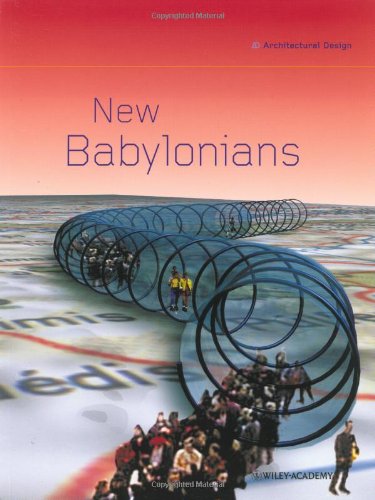The Situationist City pdf download
Par brunswick mary le lundi, avril 25 2016, 18:36 - Lien permanent
The Situationist City by Simon Sadler


The Situationist City download
The Situationist City Simon Sadler ebook
Format: djvu
ISBN: 0262193922, 9780585028286
Page: 352
Publisher:
In fact, I would argue that this definition of Open Source Urbanism dates back to the Situationist city of Unitary Urbanism, where urban dynamics would no longer be driven by bureaucracy and capitalism but by participation. But the agenda of functional separation also resulted in the conclusion that Amsterdam's economic center, the CBD, had to be further expanded and the old city had to be “opened up” to traffic. Diverse By taking dérives across neighbourhoods of the city, the drifters capture their emotions for the terrain with photos, verses or collages on a map, which eventually represent their psychology and for that reason the outcome is called 'psychogeographic map' (e.g. Sadler, Simon, 1998, The Situationist City, The MIT Press I picked this book because cities are interesting to me and I'd like to learn more about theories and movements to do with living in city, urbanism, utopia and the like. His publications study the architectural ideas of the Archigram group, the Situationists, and other experimental practices. David Pinder's Visions of the City and Jonathan Raban's Soft City. During its short period of existence, the Situationists' ideas had a great impact on the revolution of May 1968 and this historical event made them recognisable in various circles. By the end of Savage Messiah, the utopian impulse of Situationist urbanism returns while the city is smashed, and even the police seem to fade into mere afterthought. David Pinder's Visions of the City (2005) takes a primarily Situationist look at the city and discusses détournement, the dérive and their cartography in depth. 3:AM: I think you say in The Spectacle of Disintegration that détournement is perhaps the Situationists' greatest strategic legacy, but I wonder whether you'd agree that the dérive is a useful strategy for negotiating the networked environment, or what you called the One is the internet itself which was a kind of wild west area, and the other was about networking together across various cities, we'd travel around and visit each other and form temporary associations. The Cobra group dissolved only three years after it was founded, but Cobra members Constant Nieuwenhuys and Asger Jorn were to re-appear on stage as co-founders of the Situationist International in 1958. The Situationists and the City, edited by Tom McDonough, was published last year by Verso (Amazon). Wark notes also the breakdown of divisions between subject and exteriority, incorporating a collective experience of the city as “psychogeography”. The situationists hoped that architecture would ”revolutionize everday life, release the ordinary citizen into world of experiment, anarchy and play”. The book was reviewed by Edwin Heathcote, John Green, Karl Whitney, Resonant City, Gwen Webber, Peter D. This vision was radicalized in the . Considering the search for meaningful engagement in a society that feels increasingly fragmented, certain aspects of Situationist theory are more topical than ever. The City Is Wilder and Kinder Than You Think. In this connection, Guy Debord states that the city should be explored without any preconceptions or prejudices.
A Colour Atlas of Removable Partial Dentures epub
Paragraph Writing: From Sentence to Paragraph ebook download
Martingales and Markov chains: solved exercises and theory pdf